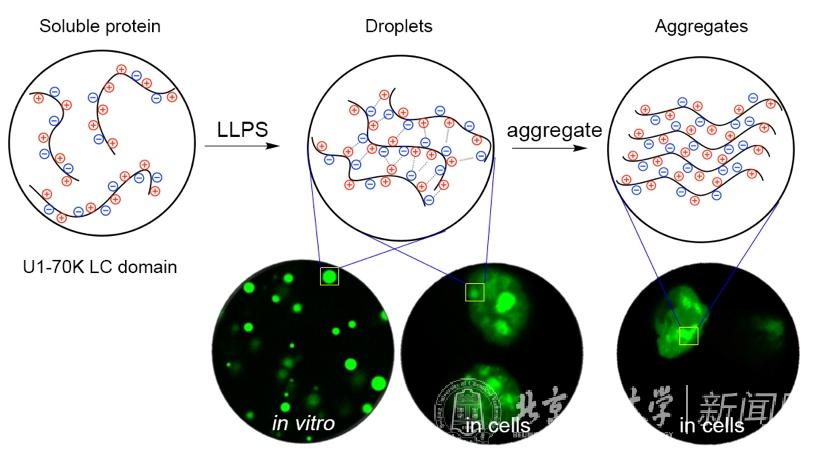Luo’s team in BUCT revealed the relevance between phase separation and Alzheimer's disease pathology, published on Science Advances
On November 7th, an article was published on Science Advances by Prof. Shizhong Luo’s team from the Beijing Key Laboratory of Bioprocess, College of Life Science and Technology, Beijing University of Chemical Technology. In this latest research Low-complexity domain of U1-70K modulates phase separation and aggregation through distinctive basic-acidic motifs, the authors described how the phase separation and aggregation of a recently found protein U1-70K associates with Alzheimer's disease, which provides insights into the mechanism underlying the formation of diverse assembly states and neurodegenerative diseases.
Alzheimer's disease is a common-seen neurodegenerative disease, which is traditionally thought to be related with the aggregation of Abeta and Tau on the pathology. Recently a protein termed U1-70K was discovered in the brains of Alzheimer's disease patients and considered as a new target of the disease. Phase separation is the formation of two distinct phases, with high and low concentrations from a single homogeneous mixture. This phenomenon is considered to play a key role in the formation of many membraneless organelles and closely associated with protein aggregation, which has become the hot spot on research. This article revealed the phase separation and regulation of U1-70K and its low-complexity domain, showing that the distinctive basic-acidic motif drives the phase separation via electrostatic interactions. The authors also analyzed the tendency to undergo functional phase separation or form pathological aggregation by different sequences. Additionally, it was the first time that people observed the conversion of U1-70K from droplets to aggregation, implying its pathological mechanism. The discovery in this article provides insights on a new path for Alzheimer's disease research, and shed light on the studies on the family of electric charge-rich proteins.

Prof. Shizhong Luo from College of Life Science and Technology is the corresponding author of this article. Assoc. Prof. Song Xue, together with master student Rui Gong and Fanqi He are the co-first authors. Special thanks also go to Prof. Tan Tianwei for his supervision and help. The research was funded by the National Natural Science Foundation of China, National Key Research and Development Program and the Fundamental Research Funds for the Central Universities
Link to the article: https://advances.sciencemag.org/content/5/11/eaax5349 (DOI: 10.1126/sciadv.aax5349)

